A Midsummer Night with Ancient Pagan Traditions in Lithuania - Summer Solstice
Each year, around the summer solstice, people across the Northern Hemisphere celebrate the longest day and shortest night of the year. Known as Midsummer, Litha in the Pagan Wheel of the Year, or Dew (Rasos) in Lithuania, this celebration marks the turning point when the days begin to shorten and the nights grow longer. If you are interested in this celebration, I've covered it here in detail: Litha.
In Lithuanian pagan tradition, Rasos (meaning "dew") is one of the most sacred and ancient festivals, deeply rooted in pre-Christian customs. It honors the power of the sun, fertility, nature, and the cycles of life. People gather to connect with the elements — water, fire, earth, and air — and to express gratitude for the fullness of summer.
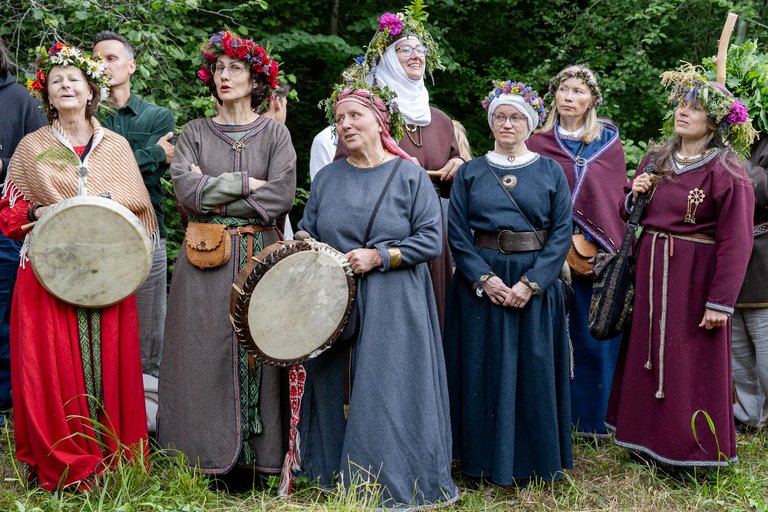
Some modern pagan communities in Lithuania still actively celebrate Rasos in a traditional way. I recently had the opportunity to attend and photograph such a celebration, held on a hillfort — the same place where this community gathers every year. I had visited the previous year as well, but this time I brought my camera.
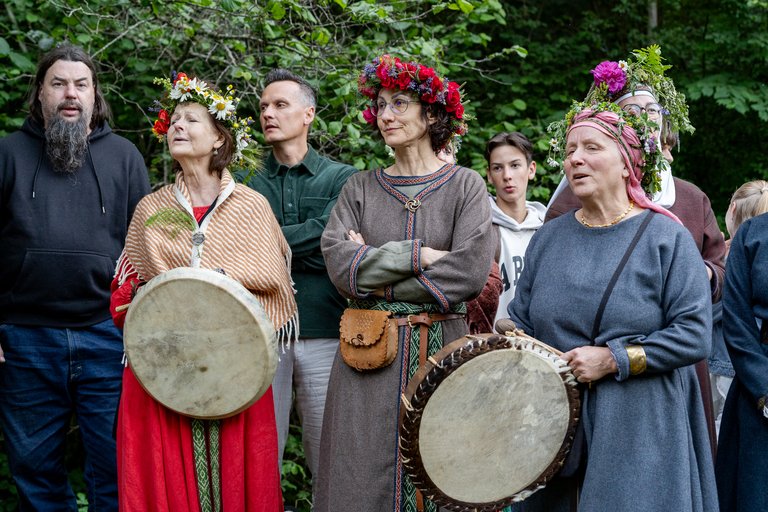
The gathering began at 8 PM, with everyone walking down to a nearby stream. There, for about an hour, they sang folk songs — traditional Lithuanian polyphonic songs that are often performed in a call-and-response or layered fashion. Some participants stepped into the stream, while others were gently cleansed with the stream’s water by designated members of the community. This ritual was meant to wash away negative energy and prepare for the new cycle. Hugs followed, and blessings were shared among participants.
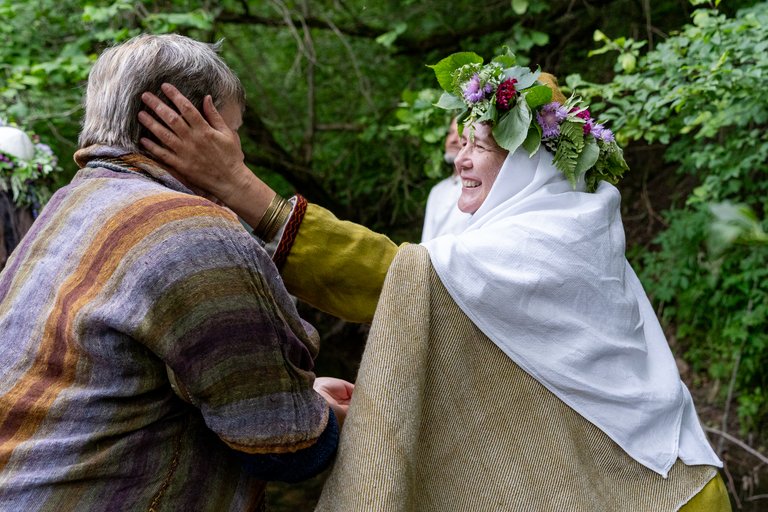
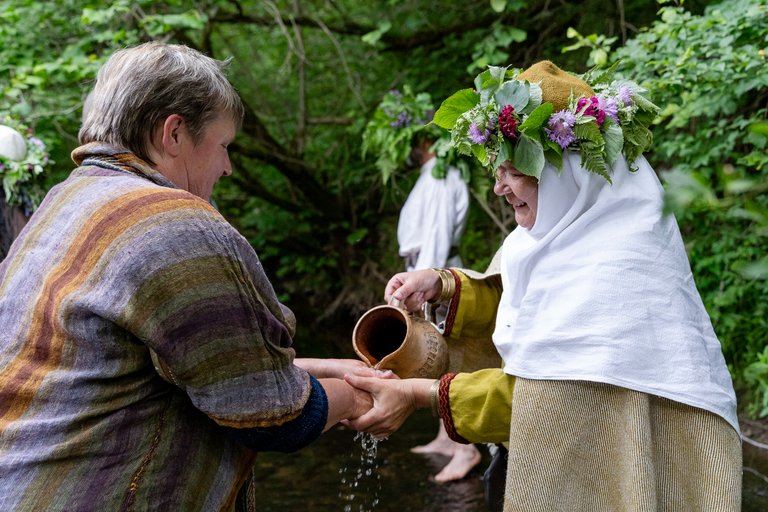
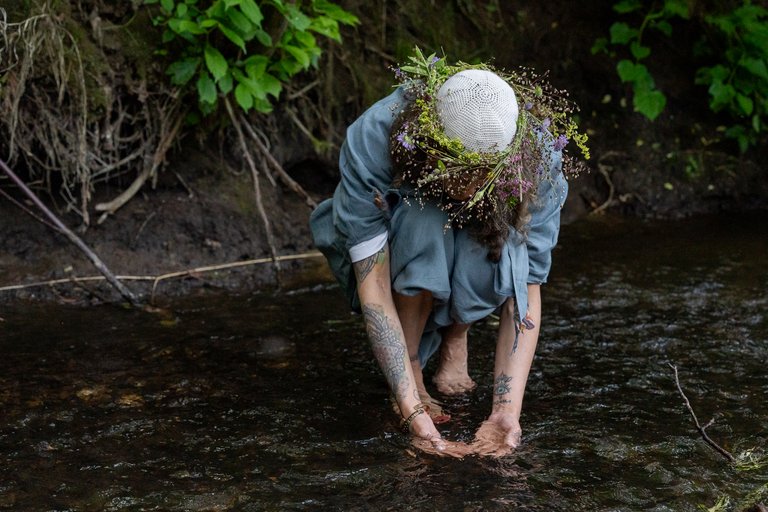
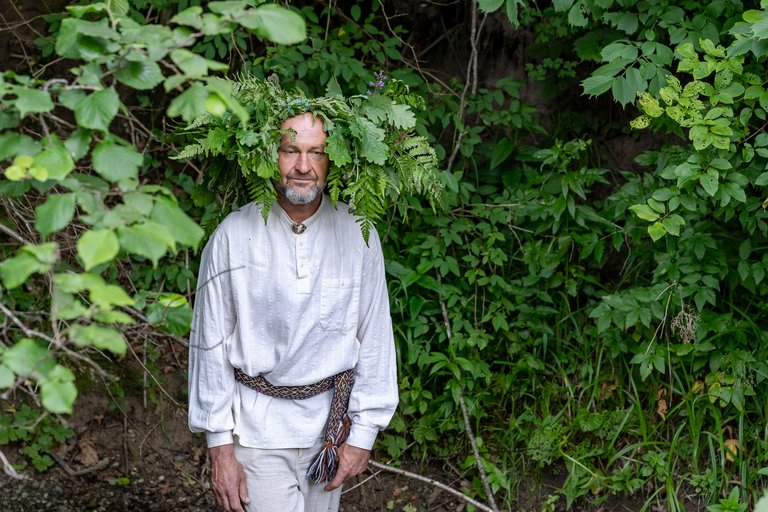
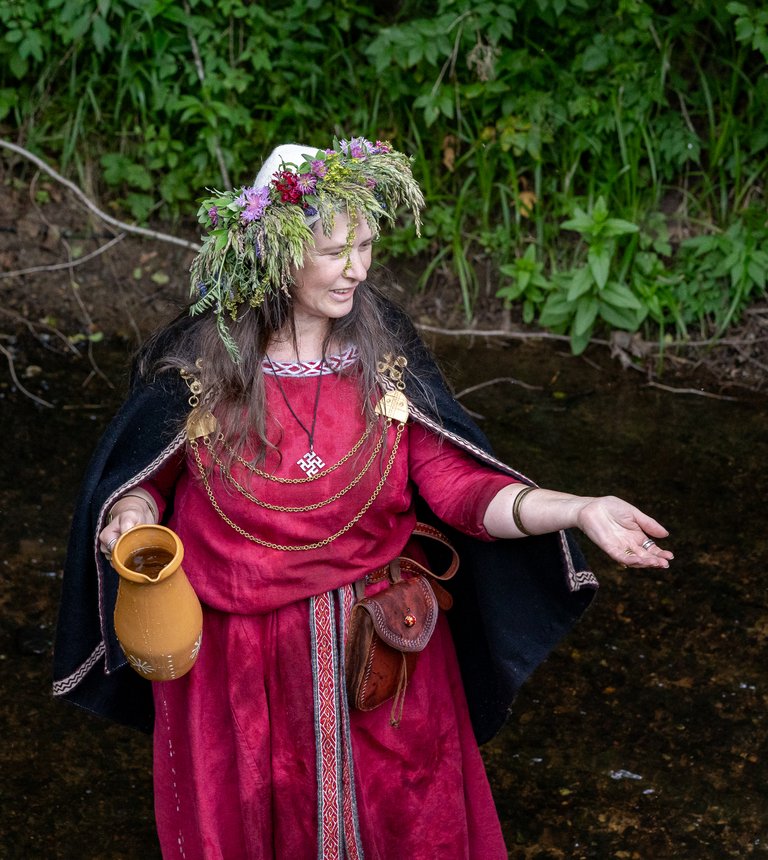
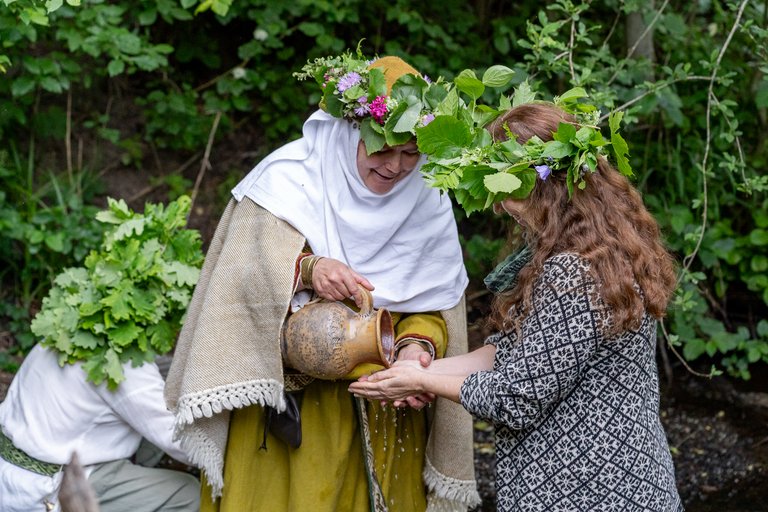
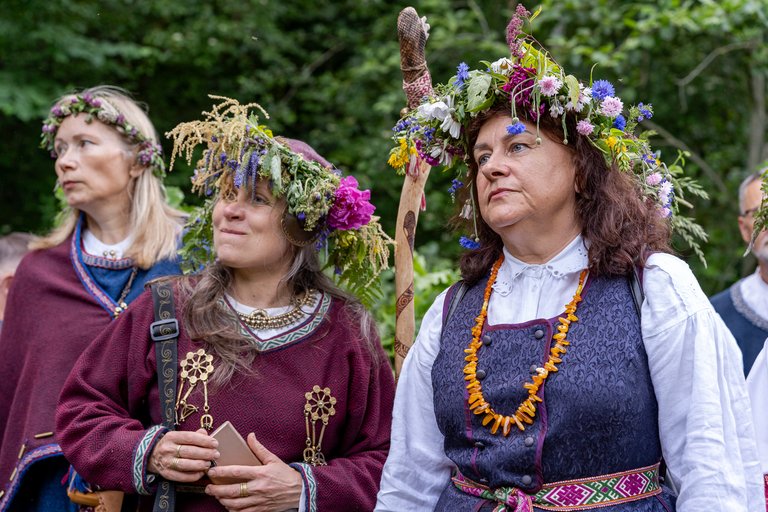
Although I personally find the folk songs a bit too long and repetitive, I understand how meaningful and beautiful they can be for those who love them — the harmony, the symbolism, the connection.
After the water ritual, we began the climb up the hillfort. Halfway up stands a large oak tree — a sacred symbol in Baltic mythology. A small fire was lit near it, and everyone passed through the smoke of burning juniper branches to spiritually cleanse themselves and let go of what they no longer needed. Then, each person hugged the oak tree — both from the front and the back — to receive its strength and grounding energy.
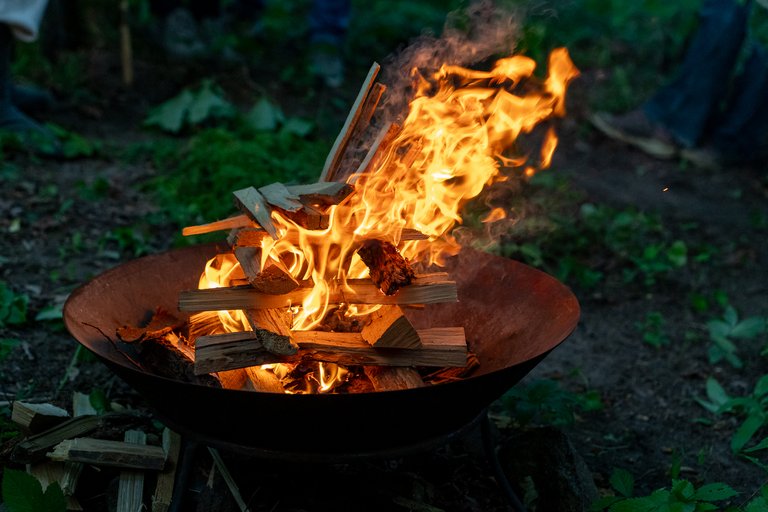
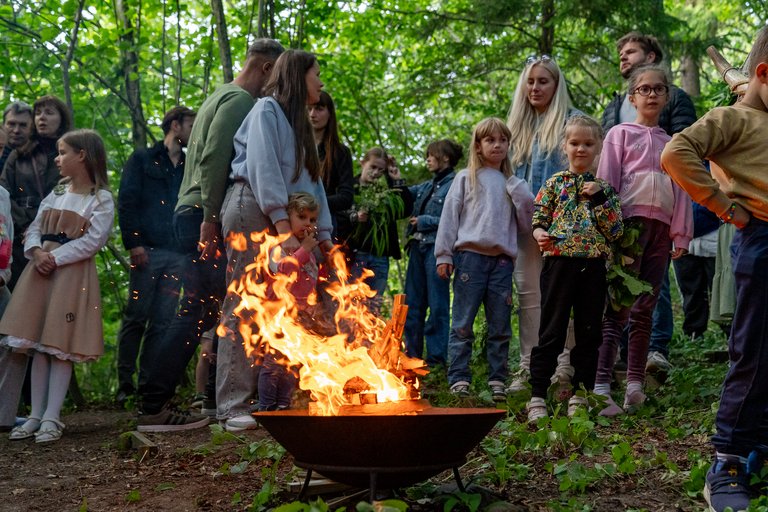
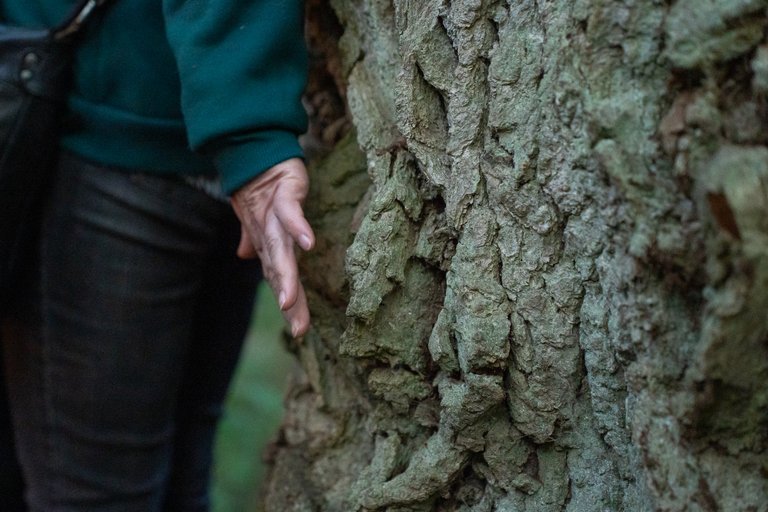
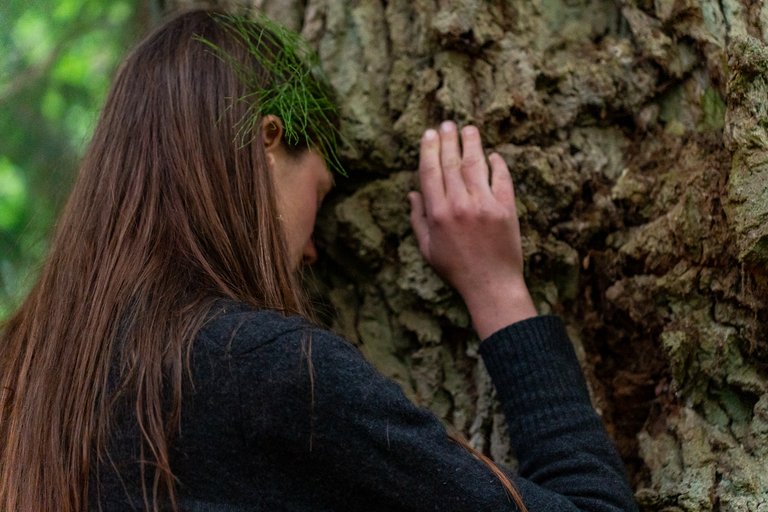
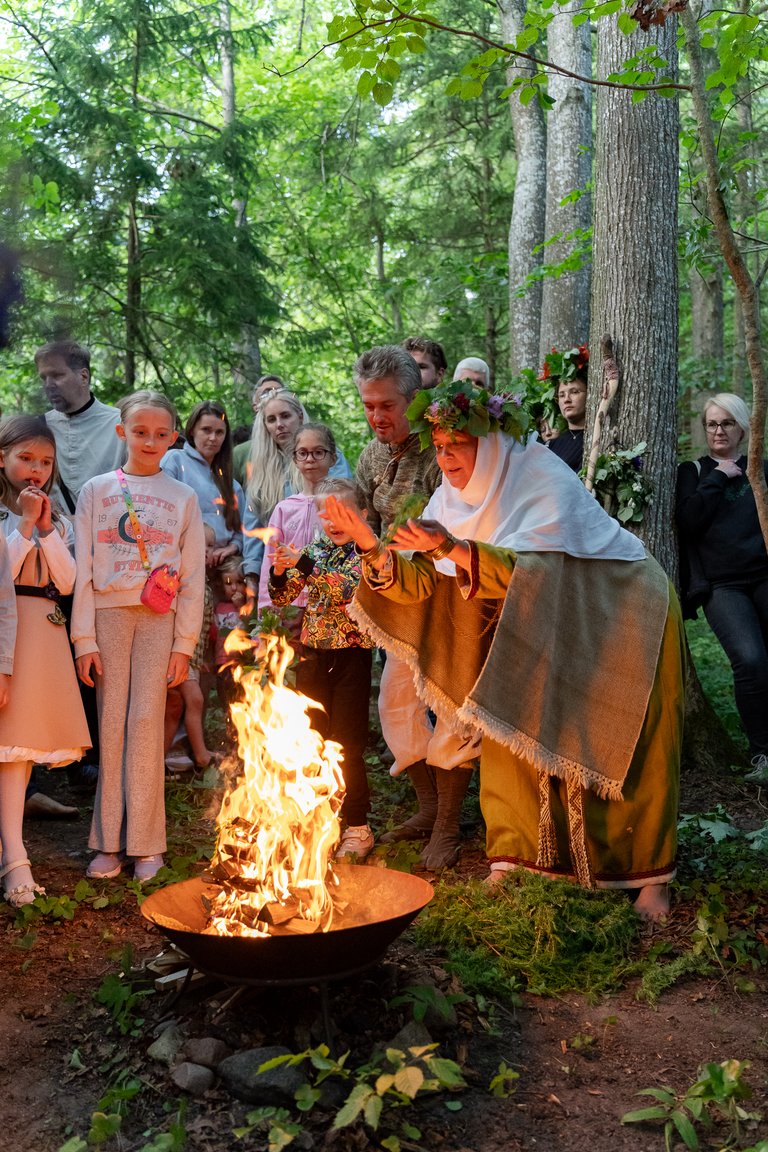
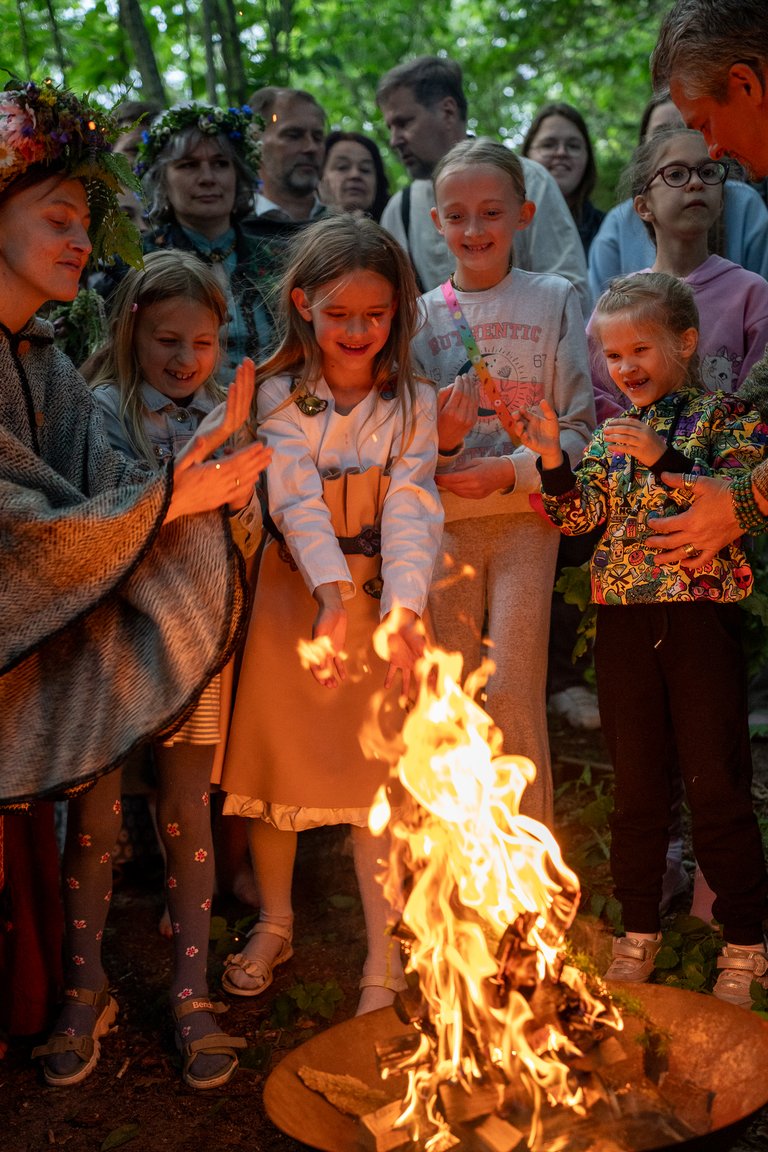
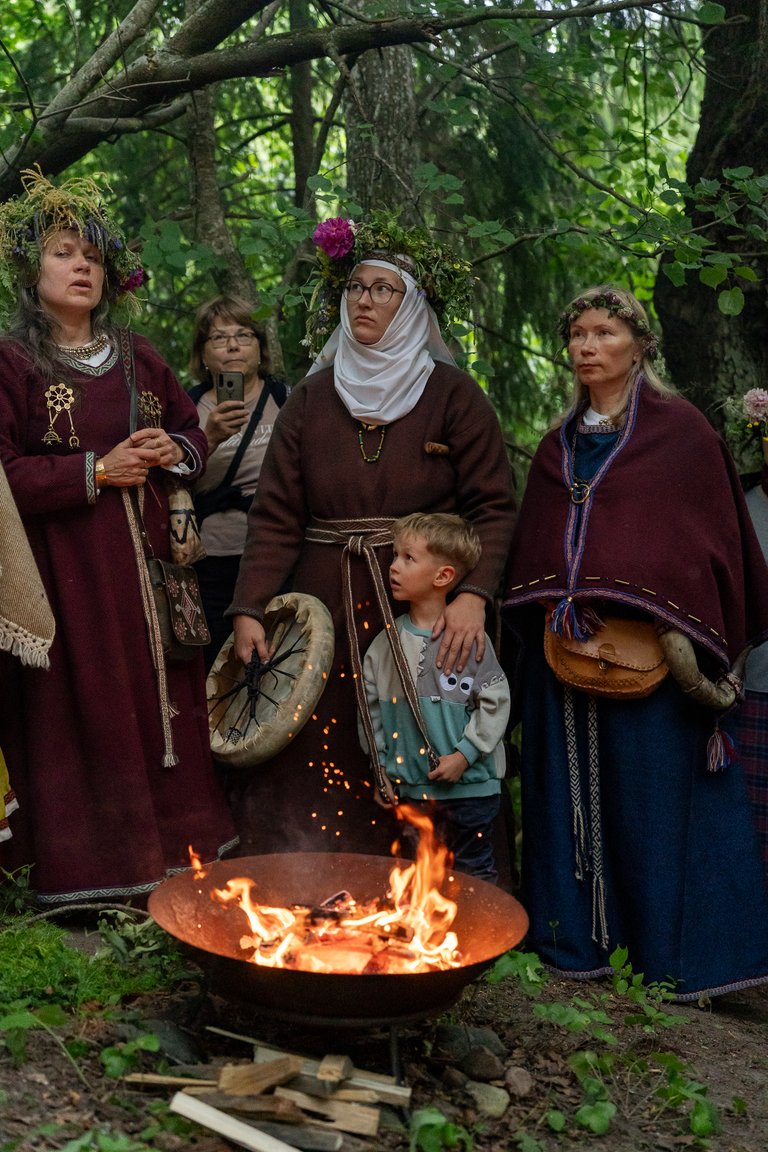
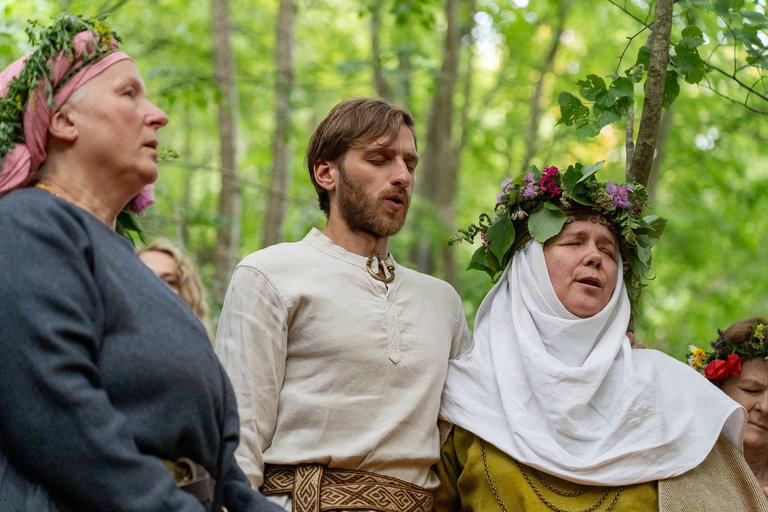
At the top of the hillfort, surrounded by woods with only a limited view of the horizon, a large bonfire was stacked, not yet lit. Nearby, another smaller bonfire pile stood beside wooden gate-like structures. Men and women sang songs again — first the women, then the men. Some were still making flower wreaths.
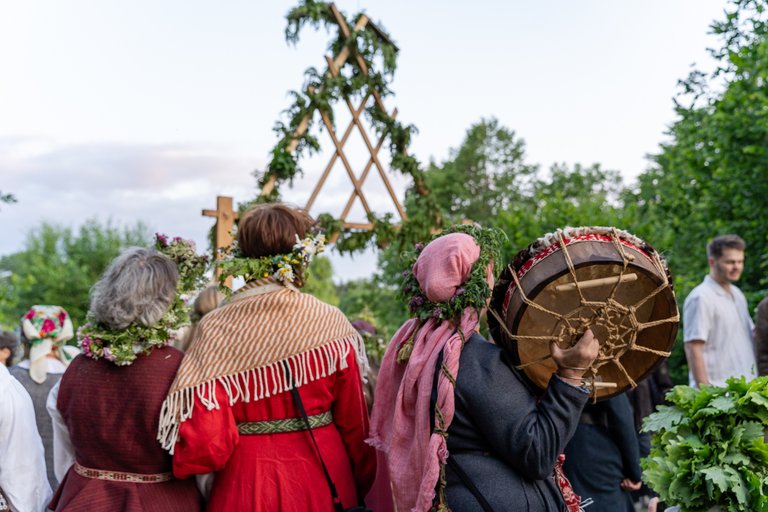
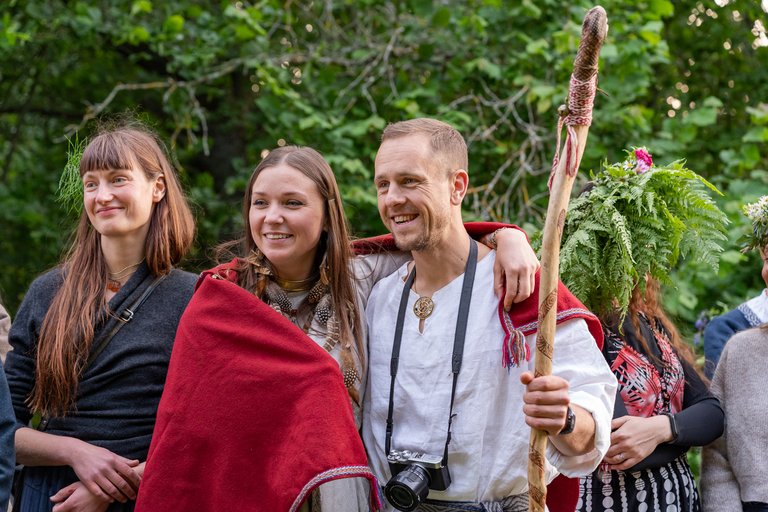
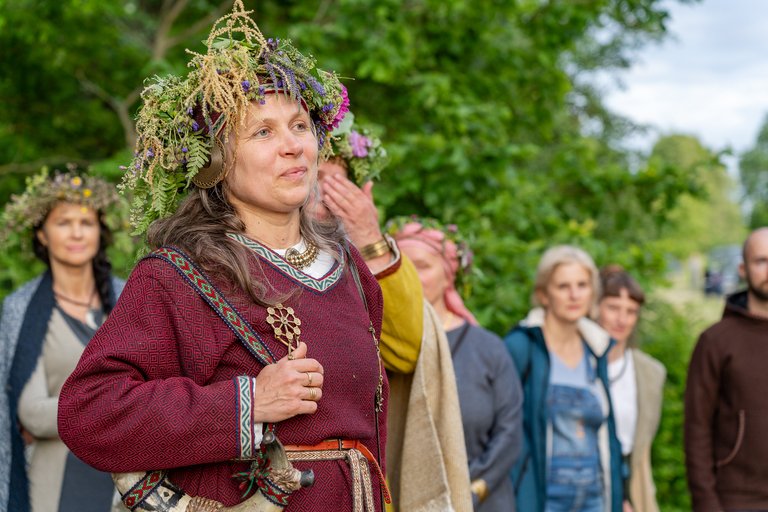
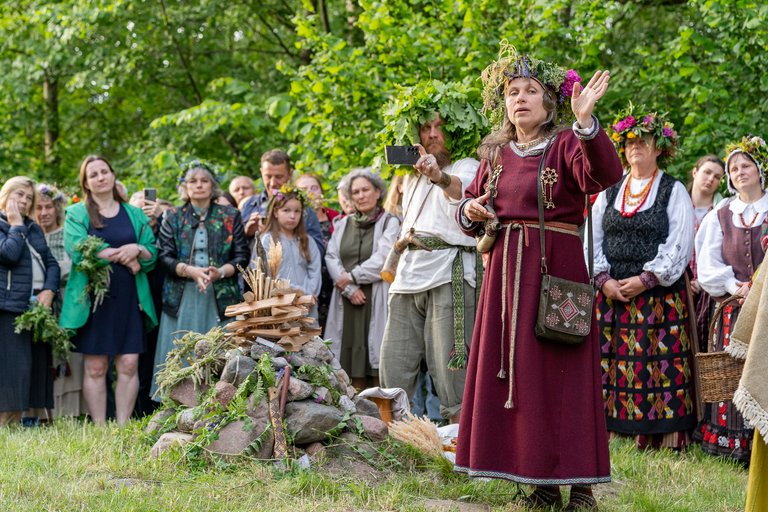
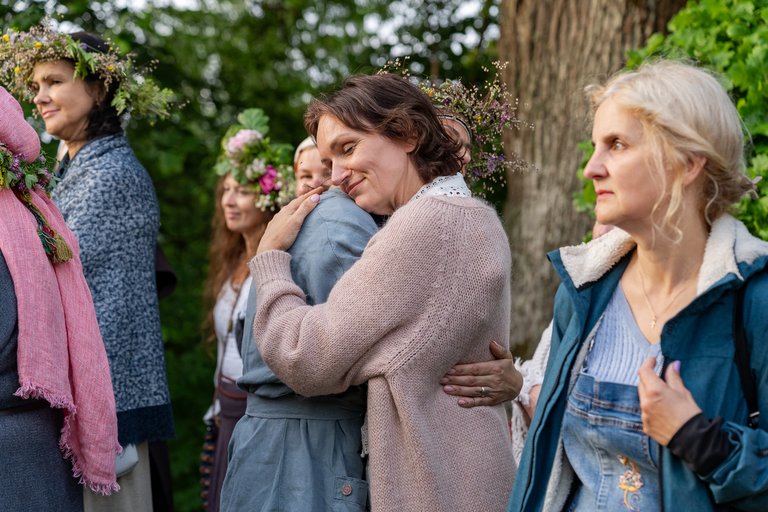
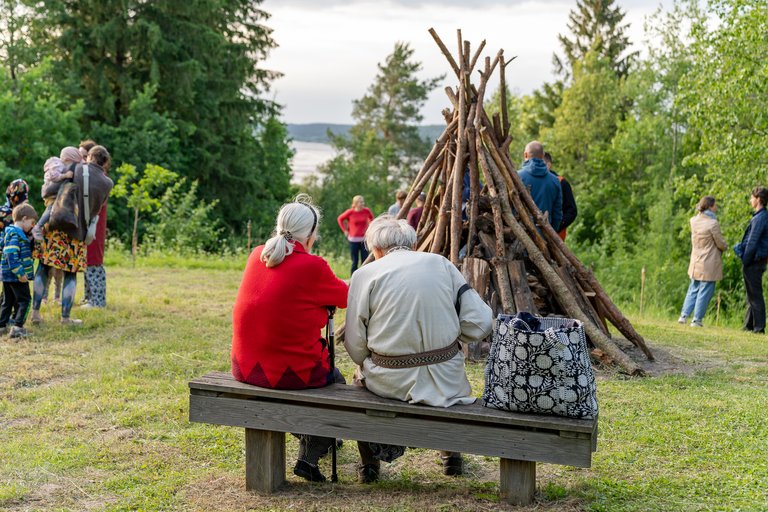
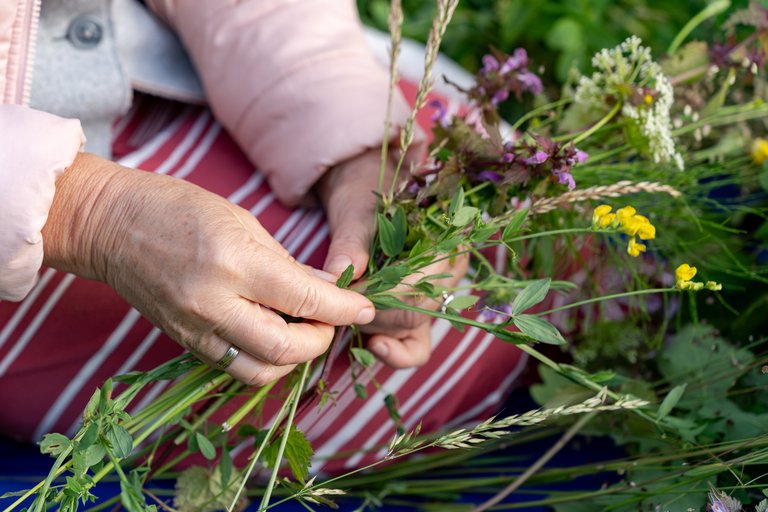
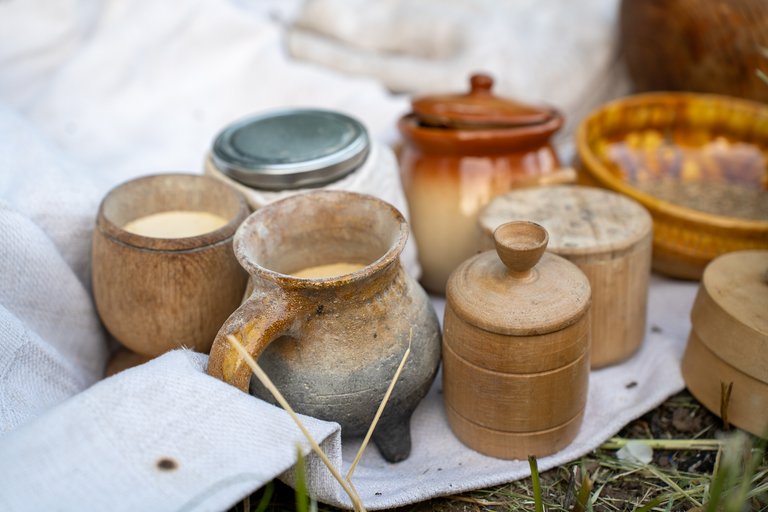
Later, everyone formed separate circles — men and women — and began walking in opposite directions around the gate posts, meeting in the middle to bow to each other. This felt like a symbolic honoring of both feminine and masculine energies.
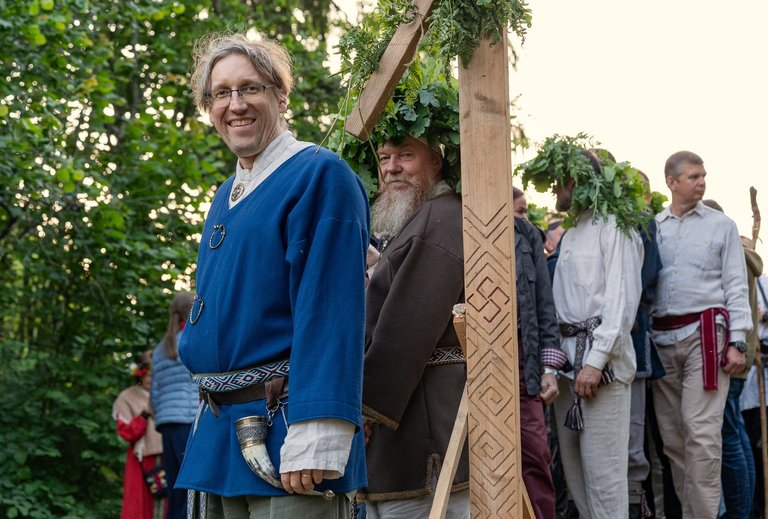
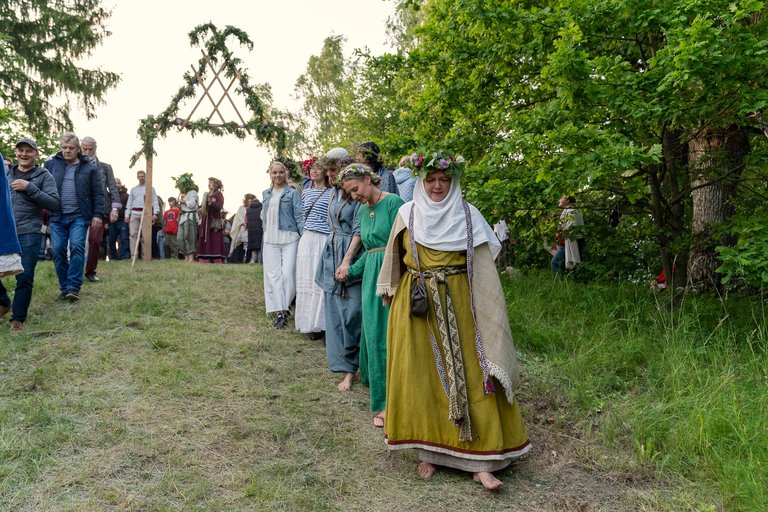
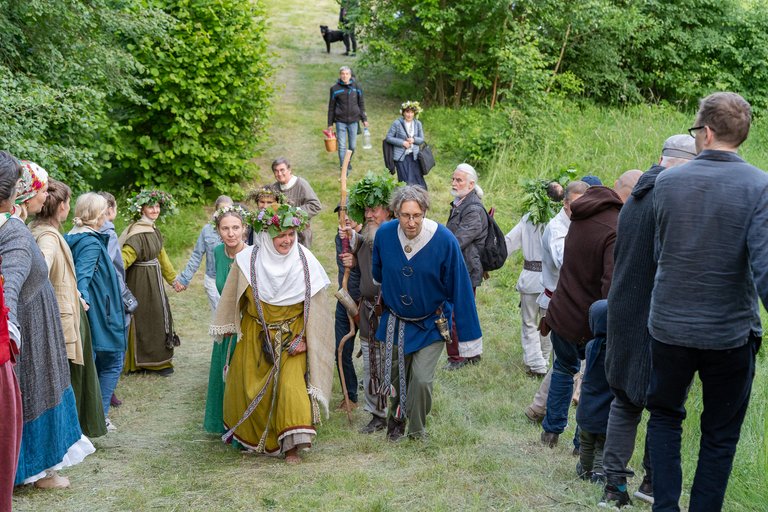
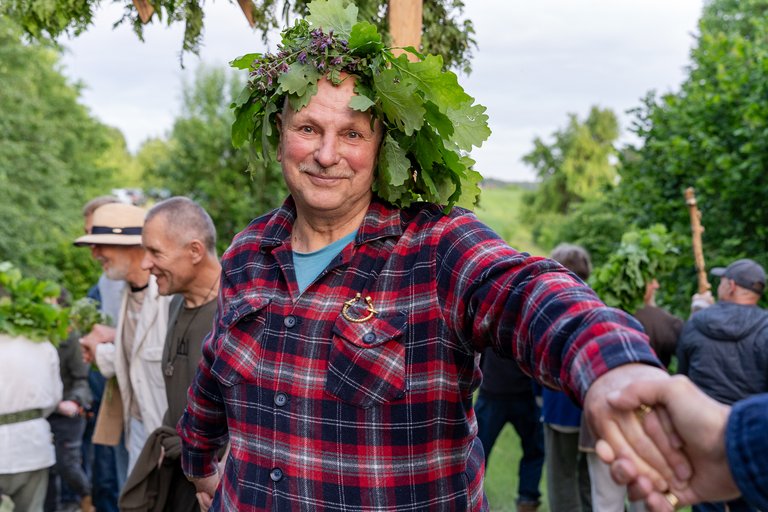
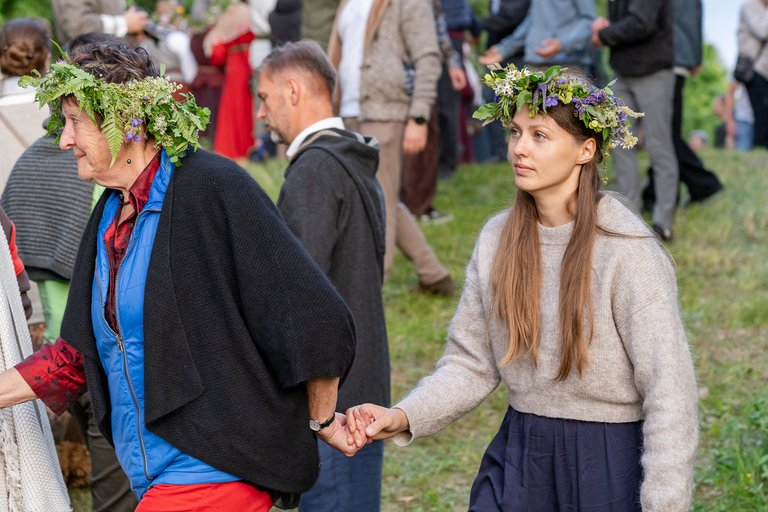
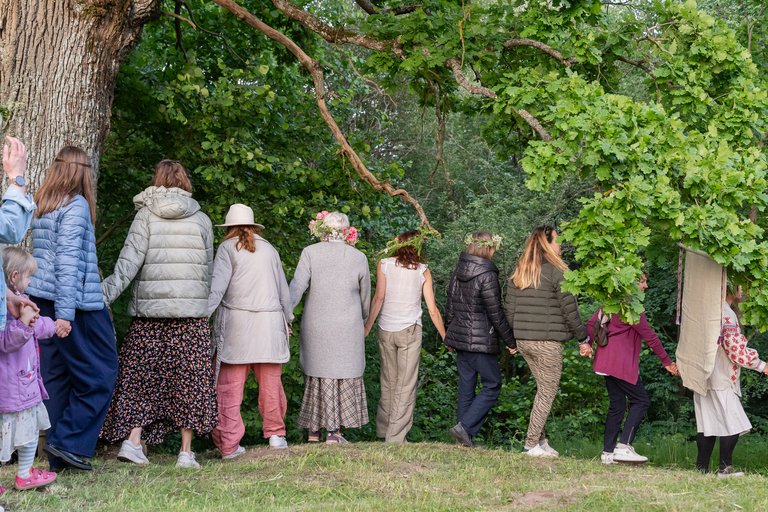
Next came the tradition of gathering nine different herbs in silence. This ritual is done primarily by women, who later bring their bouquet to an elder or knowledgeable woman who interprets what the herbs might say about their year ahead. During this time, the men continued singing nearby.
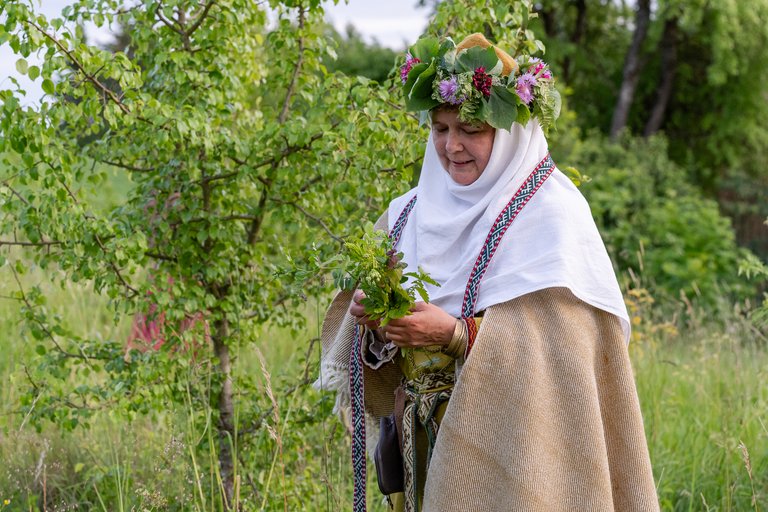
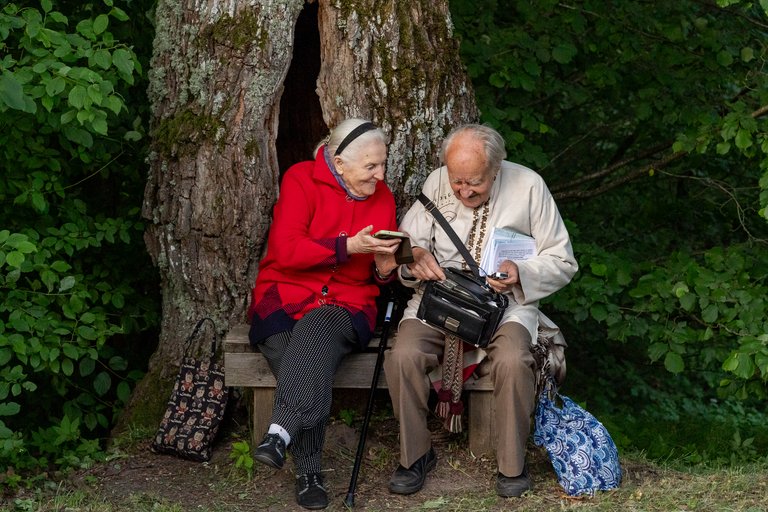
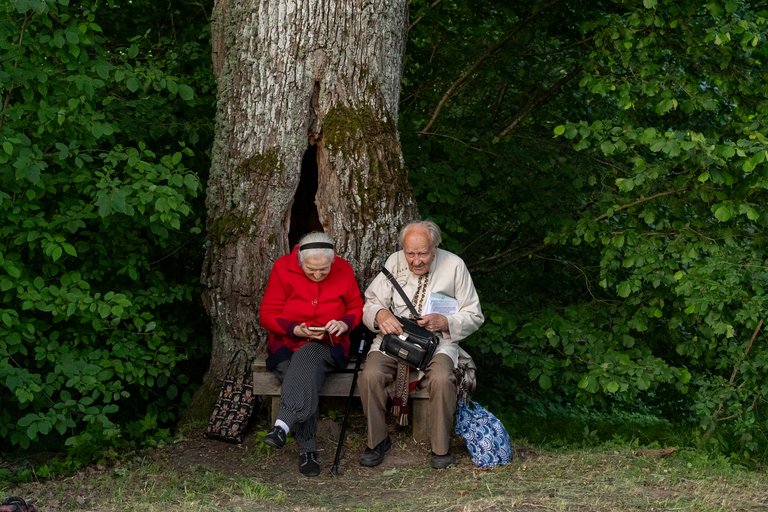
When the smaller bonfire was finally lit, the mood grew even more magical. Amber dust was thrown into the flames — it sparkled and cracked like tiny fireworks. People made wishes while casting the amber into the fire. I didn’t have enough dust for a proper "pop," but the intention was still there.
We shared traditional black rye bread, each person breaking off a piece, followed by a sip of a fermented bread drink, with a custom of offering a blessing to the next person as you passed the cup.
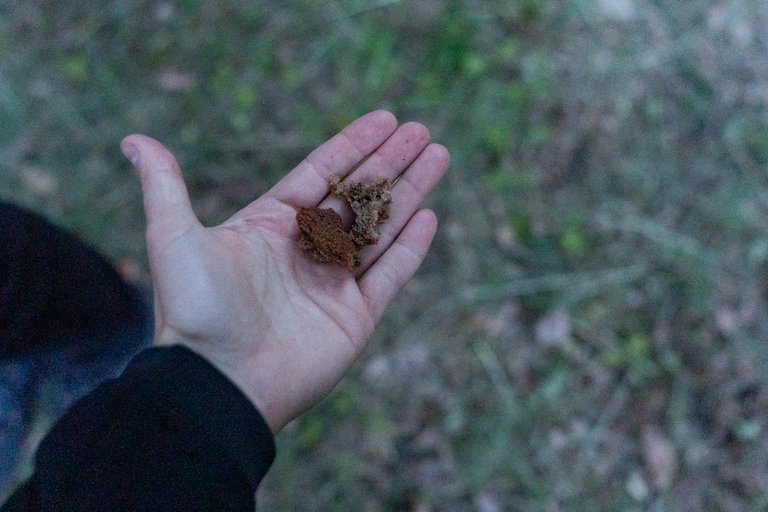
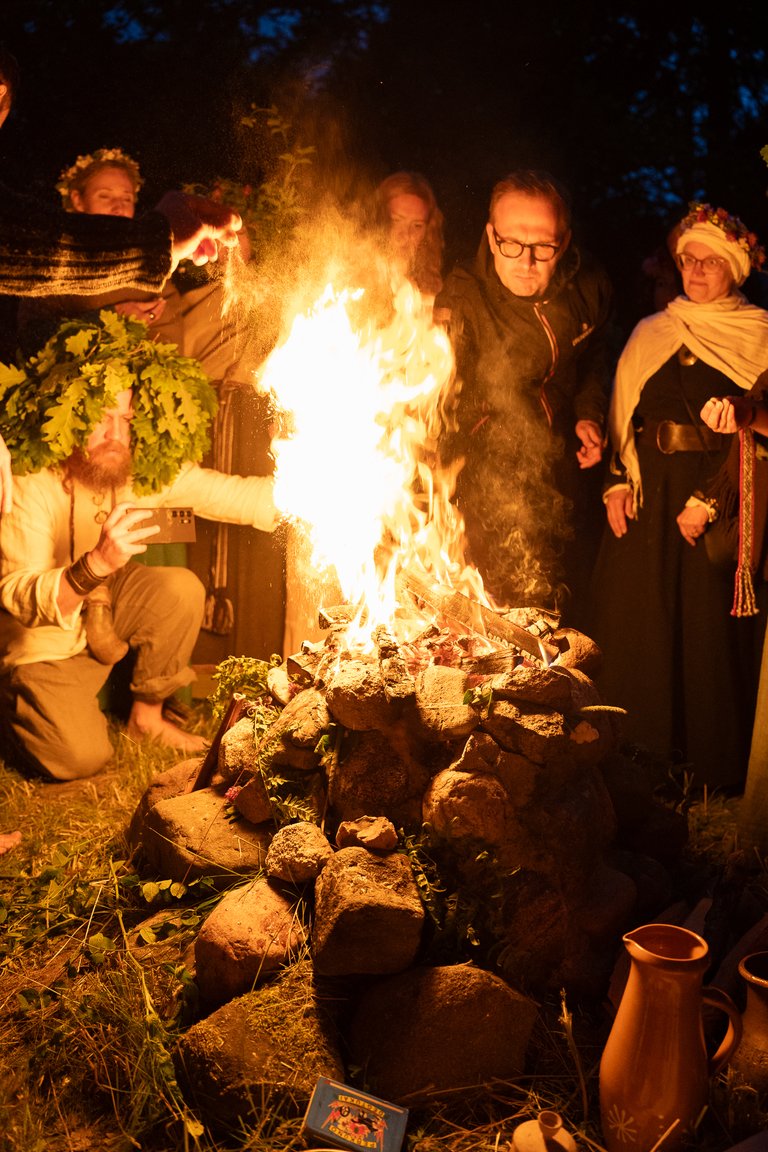
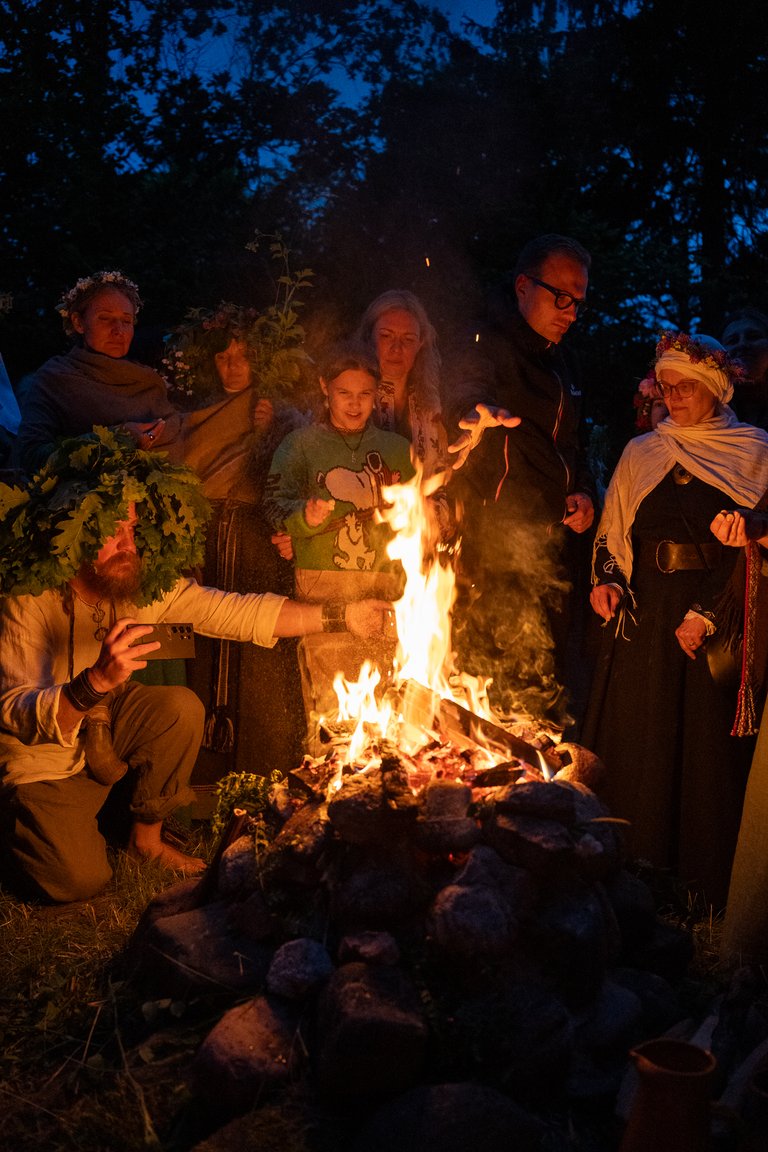
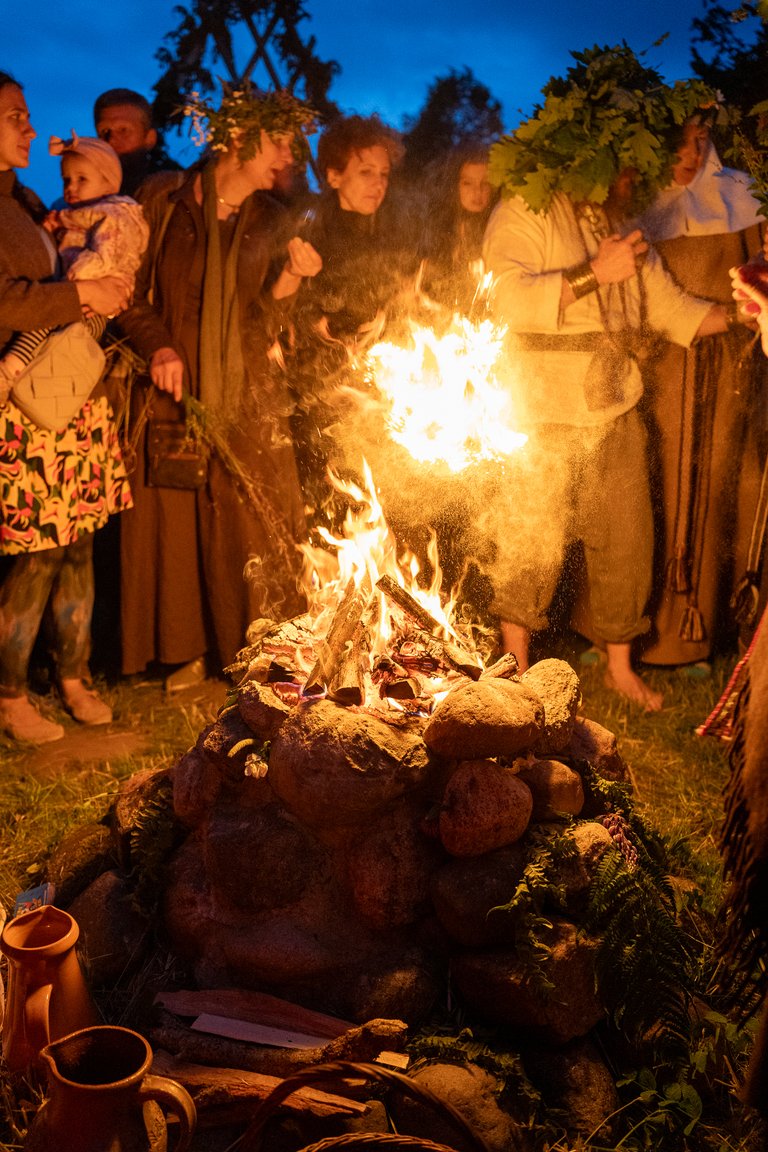
Later in the night, once darkness had settled, the large central bonfire was lit. People gathered around to sing, dance in circles, and later in pairs. Someone played accordion-like music, and the atmosphere was lively and joyful — still rooted in tradition, yet filled with personal expression.
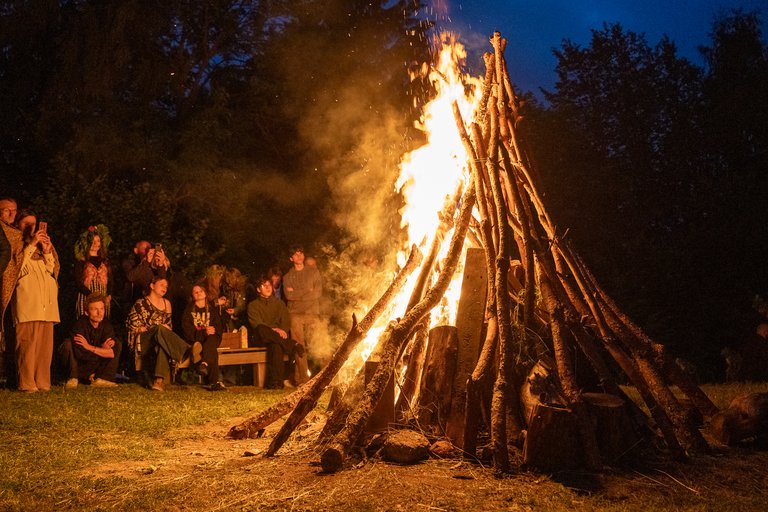
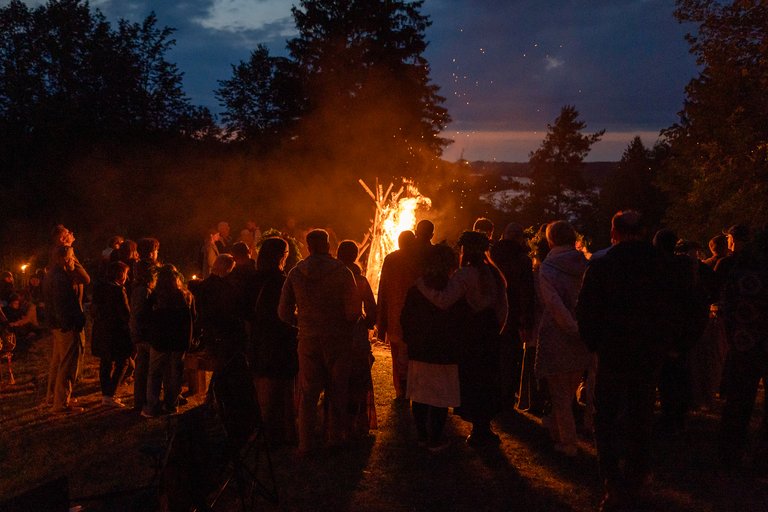
Around 1 AM, the final ritual took place. Women went down to the river to float their handmade flower wreaths on the water, a traditional way to divine their future or attract love. I didn’t photograph this part — it was late, very dark, and I was quite tired myself — but the songs continued even then.
Some people stay up until sunrise, brewing tea by the fire and welcoming the new day, possibly singing to the rising sun itself. But I left before that so didn't photograph that also.
Seeing these traditions alive and carried out so thoughtfully in modern times was heartwarming. Even though I personally found the folk songs a bit exhausting, I appreciated the authenticity of the experience. It’s beautiful to witness people honoring the rhythms of nature and the wisdom of their ancestors — something we often forget in our fast-paced, modern world.
We visited this celebration with a couple of friends, so when we got back home me and my partner stayed up until sunrise, until 6AM to see everything light up. The moon was so young and beautiful as well!
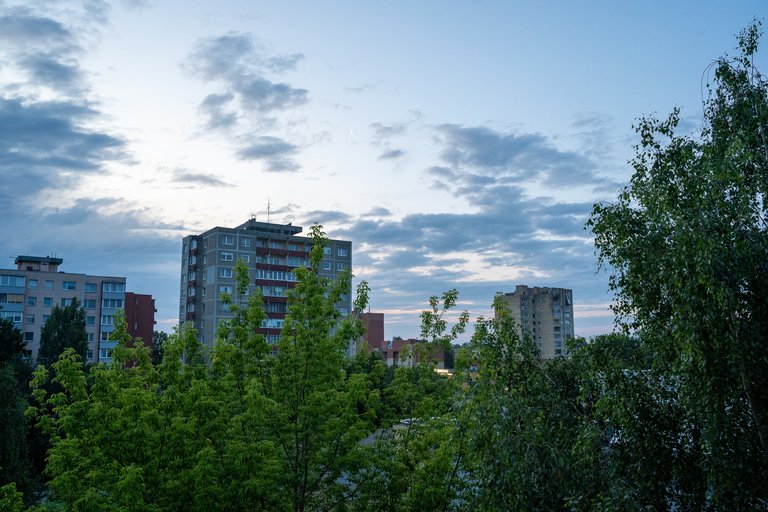
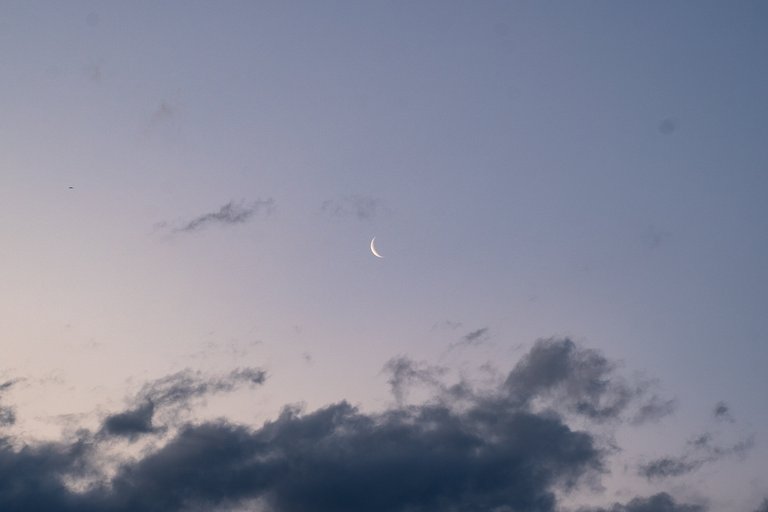
Overall, I am super grateful that I could witness people celebrating the solstice in such a deep and personal way and I am especially grateful for them being open to cameras and allowing to capture these special moments.
Let me know if you celebrate solstice in any similar way or this was all new to you? ✨
You are very lucky to be able to attend the event, there are many meanings hidden behind the summer solstice event in your area, I love that the people there still maintain this tradition.
100% agree! It's super magical especially the first time you see such an event, feels like you go back in time to your ancestor times 😍
I want to believe these traditions are well preserved and intended to be passed on to future generations. Glad you share this.
Thank you!!